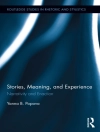Descriptive grammars are our main vehicle for documenting and analysing the linguistic structure of the world’s 6, 000 languages. They bring together, in one place, a coherent treatment of how the whole language works, and therefore form the primary source of information on a given language, consulted by a wide range of users: areal specialists, typologists, theoreticians of any part of language (syntax, morphology, phonology, historical linguistics etc.), and members of the speech communities concerned. The writing of a descriptive grammar is a major intellectual challenge, that calls on the grammarian to balance a respect for the language’s distinctive genius with an awareness of how other languages work, to combine rigour with readability, to depict structural regularities while respecting a corpus of real material, and to represent something of the native speaker’s competence while recognising the variation inherent in any speech community.
Despite a recent surge of awareness of the need to document little-known languages, there is no book that focusses on the manifold issues that face the author of a descriptive grammar. This volume brings together contributors who approach the problem from a range of angles. Most have written descriptive grammars themselves, but others represent different types of reader. Among the topics they address are: overall issues of grammar design, the complementary roles of outsider and native speaker grammarians, the balance between grammar and lexicon, cross-linguistic comparability, the role of explanation in grammatical description, the interplay of theory and a range of fieldwork methods in language description, the challenges of describing languages in their cultural and historical context, and the tensions between linguistic particularity, established practice of particular schools of linguistic description and the need for a universally commensurable analytic framework.
This book will renew the field of grammaticography, addressing a multiple readership of descriptive linguists, typologists, and formal linguists, by bringing together a range of distinguished practitioners from around the world to address these questions.
Tabella dei contenuti
1. Alan Dench and Nicholas Evans Introduction
2. Ulrike Mosel Grammaticography: the art and craft of writing grammars
3. Felix K. Ameka Real descriptions: reflections on native speaker and non-native speaker descriptions of a language
4. Dietmar Zaefferer Cross-linguistic grammatography as database development
5. Sonia Cristofaro The organization of reference grammars: a typologist user’s point of view
6. Igor Mel’cuk Calculus of possibilities as a technique in linguistic typology
7. Matthew Dryer Descriptive theories, explanatory theories and basic linguistic theory
8. Keren Rice Let the language tell its story: the role of linguistic theory in writing grammars
9. Randy La Polla and Dory Poa On describing word order
10. Nick EnfieldHeterosemy and the grammar-lexicon trade-off
11. Birgit Hellwig Field semantics and grammar-writing: Experimental methods and the study of locative verbs
12. Eva Schultze-Berndt Taking a closer look at function verbs: lexicon, grammar, or both?
13. Azeb Amha and Gerrit Dimmendaal Converbs in an African perspective
14. Hilary Chappell From Eurocentrism to Sinocentrism: the case of patient-marking constructions in Sinitic languages
15. Nikolaus Himmelmann How to miss a paradigm or two: Multifunctional ma in Tagalog
16. Robert Rankin The interplay of synchronic and diachronic discovery in Siouan grammar-writing
17. Brian Joseph The historical and cultural dimensions in grammar formation: the case of Modern Greek
18. Anthony Diller Polylectal grammar and Royal Thai
19. Jane Hill Writing culture in grammar in the Americanist tradition
Circa l’autore
Nicholas Evans is Professor of Linguistics at the University of Melbourne, Victoria, Australia.
Alan Dench is Professor of Linguistics at the University of Western Australia, Crawley, Australia.
Felix K. Ameka is Lecturer at Leiden University, The Netherlands, and Editor of the Journal of African Languages and Linguistics (JALL).












